Guided Reading Activity: World War I and the Russian Revolution
Explore the transformative events of the early 20th century through this guided reading activity. Analyze the causes and key events of World War I and the Russian Revolution‚ tracing political upheavals and social shifts. Understand how these historical moments reshaped global dynamics and laid the groundwork for future conflicts. Engage with primary sources and scholarly insights to deepen your comprehension of this pivotal era.
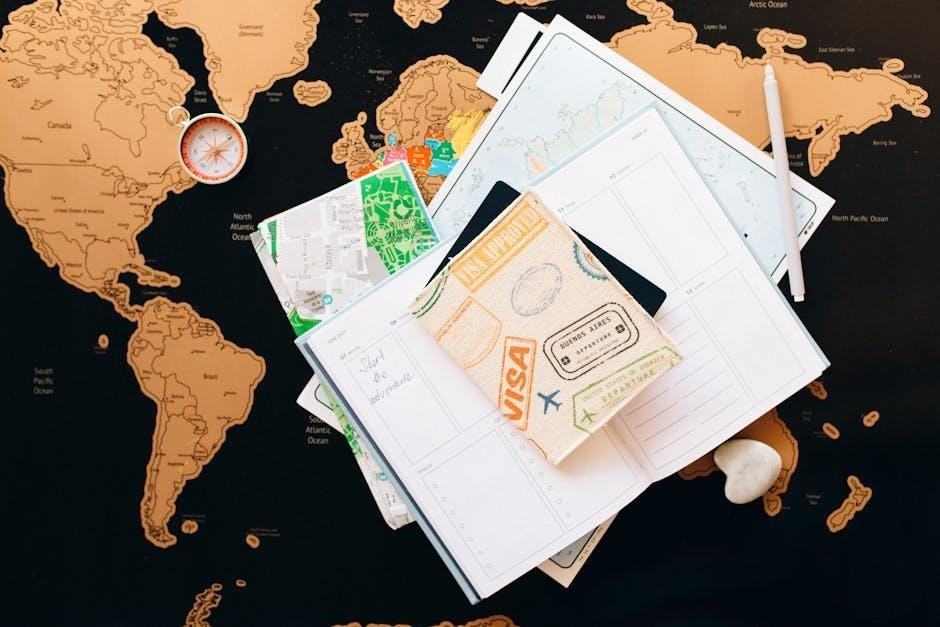
Welcome to this guided reading activity‚ designed to explore the interconnected events of World War I and the Russian Revolution. These two pivotal moments of the early 20th century reshaped global politics‚ societies‚ and economies. Through a series of readings and reflections‚ students will analyze the causes‚ key events‚ and lasting impacts of both phenomena. The activity encourages critical thinking about how political instability‚ economic hardship‚ and ideologies like Marxism influenced the outbreak of war and revolution. By examining primary sources and scholarly interpretations‚ participants will gain a deeper understanding of the transformative legacy of these events. This structured approach fosters engagement and synthesis of complex historical themes‚ preparing students to draw connections between past and present.
Overview of World War I and the Russian Revolution
World War I (1914–1918) was a global conflict triggered by the assassination of Archduke Franz Ferdinand‚ involving complex alliances and militarism. It caused unprecedented destruction‚ economic strain‚ and societal upheaval. The Russian Revolution (1917) emerged from this chaos‚ driven by political unrest‚ economic hardship‚ and the spread of Marxist ideas. The February Revolution toppled the monarchy‚ while the October Revolution brought the Bolsheviks to power‚ establishing the world’s first socialist state. Both events reshaped global politics‚ leading to the rise of new ideologies and setting the stage for future conflicts. This overview provides a foundational understanding of these interconnected events‚ highlighting their significance in modern history and their enduring impact on international relations and societal structures.
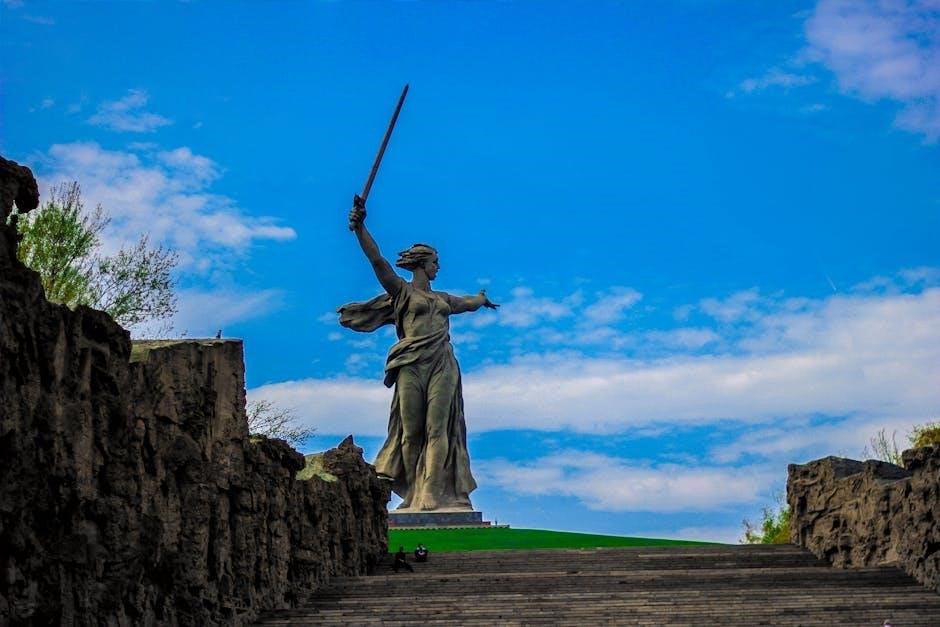
Causes of World War I
Militarism‚ alliances‚ imperialism‚ and nationalism created a volatile atmosphere‚ leading to the outbreak of World War I‚ a conflict rooted in complex political and economic tensions.
Militarism and the Arms Race in Europe
Militarism and the arms race played significant roles in escalating tensions before World War I. European nations‚ particularly Britain‚ Germany‚ France‚ and Russia‚ engaged in intense military build-ups‚ fostering a climate of rivalry and fear. Germany’s rapid naval expansion‚ challenging Britain’s dominance‚ heightened anxieties. France and Russia also increased their military capacities‚ while conscription systems ensured large standing armies. This arms race created a volatile atmosphere‚ making war seem inevitable. The complex system of alliances further amplified tensions‚ as nations prepared for potential conflict. The belief that military strength ensured national security drove countries to prioritize armaments over diplomacy‚ ultimately contributing to the outbreak of war.
The System of Alliances and Imperialism
The system of alliances and imperialism significantly contributed to the tensions leading to World War I. Europe was divided into two opposing alliances: the Triple Entente (France‚ Britain‚ and Russia) and the Triple Alliance (Germany‚ Austria-Hungary‚ and Italy). These alliances created a volatile environment‚ as smaller conflicts could quickly escalate into broader wars. Imperialism further fueled tensions‚ as European powers competed for colonies‚ resources‚ and influence globally. The Balkans became a flashpoint‚ with nations seeking to expand their territories‚ drawing in the great powers. The complex web of alliances and the pursuit of imperial dominance created an atmosphere of mistrust and competition‚ making war increasingly likely. This system ensured that localized disputes could spiral into a wider‚ devastating conflict.
Nationalism and Its Role in the Outbreak of War
Nationalism played a pivotal role in the outbreak of World War I‚ as it intensified tensions among European nations. The rise of nationalist sentiments fueled pride in one’s country‚ often at the expense of others. Ethnic and cultural tensions‚ particularly in the Balkans‚ further destabilized the region. The assassination of Archduke Franz Ferdinand by a Serbian nationalist was the immediate trigger‚ but underlying nationalist ideologies had long been simmering. Nationalist groups sought independence or unity‚ while major powers exploited these movements to expand their influence. The glorification of military strength and the belief in the superiority of one’s nation created an atmosphere where war seemed inevitable. This dangerous mix of nationalism and militarism pushed Europe closer to conflict‚ as nations prioritized their own interests over diplomacy and peace. The outbreak of war was‚ in part‚ a consequence of this explosive nationalist climate.
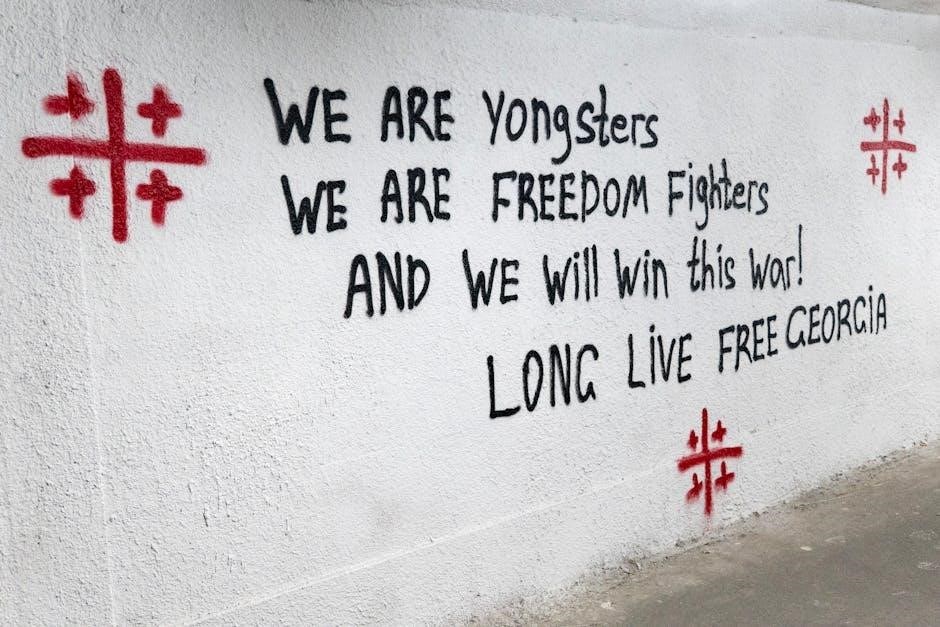
Causes of the Russian Revolution
The Russian Revolution was driven by political unrest‚ economic hardship‚ and social inequality under Czar Nicholas II‚ exacerbated by Russia’s devastating involvement in World War I.
Political Unrest and the Rule of Czar Nicholas II
Czar Nicholas II’s autocratic rule fueled widespread discontent in Russia. His refusal to implement meaningful reforms alienated the nobility and the burgeoning middle class. The humiliating defeat in the Russo-Japanese War (1904-1905) weakened his authority‚ while the Bloody Sunday massacre (1905) further eroded public trust. Nicholas II’s indecisive leadership during World War I exacerbated Russia’s economic and military struggles‚ leading to food shortages and civilian morale collapse. The czar’s decision to take personal command of the army left his wife‚ Alexandra‚ in charge‚ fostering resentment and political instability. By 1917‚ the monarchy had lost legitimacy‚ setting the stage for revolution.
Economic Hardship and Social Inequality
Russia faced severe economic hardship and social inequality in the early 20th century. The country’s rapid industrialization created a wealthy elite while leaving peasants and workers in poverty. High taxes‚ land shortages‚ and poor working conditions fueled discontent. The Russo-Japanese War (1904-1905) worsened economic strain‚ and the Bloody Sunday massacre (1905) highlighted the regime’s brutality. World War I exacerbated these issues‚ causing inflation‚ food shortages‚ and widespread suffering. The nobility and middle class grew disillusioned with the monarchy‚ while peasants and workers demanded land reform and better wages. This economic and social divide created a volatile environment‚ intensifying calls for change and contributing to the revolution’s momentum. The people’s suffering under these conditions eroded support for the czarist regime‚ paving the way for radical political movements.
The Impact of World War I on Russia
World War I had a devastating impact on Russia‚ accelerating its political and social collapse. The war drained Russia’s resources‚ leading to widespread poverty‚ food shortages‚ and inflation. Military losses were catastrophic‚ with millions of soldiers killed or wounded‚ undermining morale and public support for the war. The strain on the economy and the failure of the Russian army to achieve significant victories fueled discontent among the population. The war effort also exposed the incompetence of the czarist government‚ eroding trust in the monarchy. As a result‚ anti-war protests and strikes escalated‚ creating fertile ground for revolutionary movements. The war’s hardships became a catalyst for the overthrow of the Romanov dynasty‚ as the people demanded change and an end to Russia’s involvement in the conflict. This set the stage for the February Revolution and the eventual rise of the Bolsheviks.

Key Events of World War I
- The Assassination of Archduke Franz Ferdinand triggered the war’s outbreak.
- Major Battles included the Battle of the Somme and Verdun‚ marked by trench warfare.
- The United States’ Entry in 1917 shifted the war’s balance in favor of the Allies.
The Assassination of Archduke Franz Ferdinand
On June 28‚ 1914‚ Archduke Franz Ferdinand‚ heir to the Austro-Hungarian throne‚ was assassinated in Sarajevo by Gavrilo Princip‚ a member of the Black Hand group. This event sparked World War I‚ as Austria-Hungary‚ backed by Germany‚ issued an ultimatum to Serbia‚ leading to the involvement of other European powers. The assassination highlighted the volatile political climate in the Balkans and the intricate system of alliances that dominated pre-war Europe. Princip’s actions were driven by Serbian nationalism‚ aiming to unite South Slavs under Serbian rule. The assassination not only led to the immediate outbreak of war but also exposed deep-rooted tensions in Europe‚ including imperialism and militarism‚ which had been building for decades. This single act became the catalyst for one of the most devastating conflicts in history.
Major Battles and the Trench Warfare
World War I was characterized by devastating battles and the widespread use of trench warfare. The Battle of the Somme and Verdun were among the most brutal‚ resulting in massive casualties and little territorial gain. Trench warfare created a stalemate‚ with soldiers enduring horrific conditions‚ including mud‚ disease‚ and constant artillery fire. The introduction of new technologies‚ such as machine guns and poison gas‚ further escalated the violence. These battles highlighted the futility of traditional military tactics and the immense human cost of modern warfare. The psychological toll on soldiers was immense‚ leading to widespread cases of “shell shock.” Trench warfare became a defining feature of World War I‚ symbolizing the brutal and static nature of the conflict. The loss of life in these battles remains one of the darkest chapters in human history.
The United States’ Entry into the War
The United States initially maintained neutrality in World War I‚ focusing on economic gains through trade with both sides. However‚ Germany’s resumption of unrestricted submarine warfare and the sinking of the passenger ship Lusitania in 1915 shifted public opinion. The U.S. declared war on Germany in April 1917‚ citing threats to neutrality and democratic values. Economic ties to the Allies and propaganda also played significant roles. America’s entry provided crucial military and financial support‚ turning the war’s tide in favor of the Allies. The U.S. contribution marked its emergence as a global power‚ though it also faced internal debates over involvement and civil liberties during the war effort. This decision deeply impacted both the war’s outcome and America’s role in international affairs.

Key Events of the Russian Revolution
The Russian Revolution involved the February Revolution‚ which toppled the monarchy‚ and the October Revolution‚ where Bolsheviks seized power. Lenin’s leadership and radical reforms followed‚ reshaping Russia.
The February Revolution and the Fall of the Monarchy
The February Revolution of 1917 marked the collapse of the Russian monarchy. Widespread discontent due to food shortages‚ economic hardship‚ and Russia’s devastating losses in World War I fueled mass protests. Demonstrations erupted in Petrograd‚ led by women demanding bread and peace. The protests quickly escalated‚ and by March 1917‚ strikes and mutinies paralyzed the city. Czar Nicholas II‚ unable to maintain control‚ abdicated on March 15‚ 1917. A provisional government‚ dominated by liberal and socialist leaders‚ took power. This event ended centuries of Romanov rule and paved the way for radical political changes. The revolution reflected deep societal frustrations and the monarchy’s failure to address the nation’s crises during wartime.
The October Revolution and the Rise of the Bolsheviks
The October Revolution‚ occurring in November 1917‚ marked the Bolsheviks’ seizure of power. Led by Vladimir Lenin‚ the Bolsheviks exploited the Provisional Government’s weakness and widespread discontent. The revolution began with the storming of the Winter Palace in Petrograd‚ symbolizing the end of the provisional regime. Lenin’s promise of “peace‚ land‚ and bread” resonated with the war-weary population. The Bolsheviks quickly consolidated power‚ suppressing opposition and establishing a socialist state. This event reshaped Russia‚ leading to the creation of the Soviet Union in 1922. The October Revolution’s success laid the foundation for communist rule and had far-reaching global implications‚ inspiring socialist movements worldwide. Lenin’s leadership and Marxist ideology became central to the new regime‚ fundamentally altering Russia’s political and social landscape. The revolution remains a pivotal moment in modern history‚ showcasing the power of radical ideology and mass mobilization.
Lenin’s Leadership and the Establishment of the Soviet Union
Following the October Revolution‚ Vladimir Lenin emerged as the leader of Russia‚ guiding the Bolsheviks in consolidating power. Lenin implemented policies like war communism to centralize control over the economy‚ nationalizing industries and redistributing land. However‚ widespread opposition and economic collapse led to the introduction of the New Economic Policy (NEP) in 1921‚ allowing limited capitalist practices to revive the economy. Lenin’s leadership emphasized class struggle and the dictatorship of the proletariat‚ shaping the Soviet state’s foundation. In 1922‚ the Union of Soviet Socialist Republics (USSR) was officially established‚ uniting Russia with other Soviet republics. Lenin’s vision of a socialist society influenced global communism‚ leaving a lasting legacy. His policies and strategies set the stage for the rise of Stalin and the evolution of the Soviet Union into a superpower. Lenin’s leadership remains a defining chapter in the history of the Russian Revolution and its aftermath.
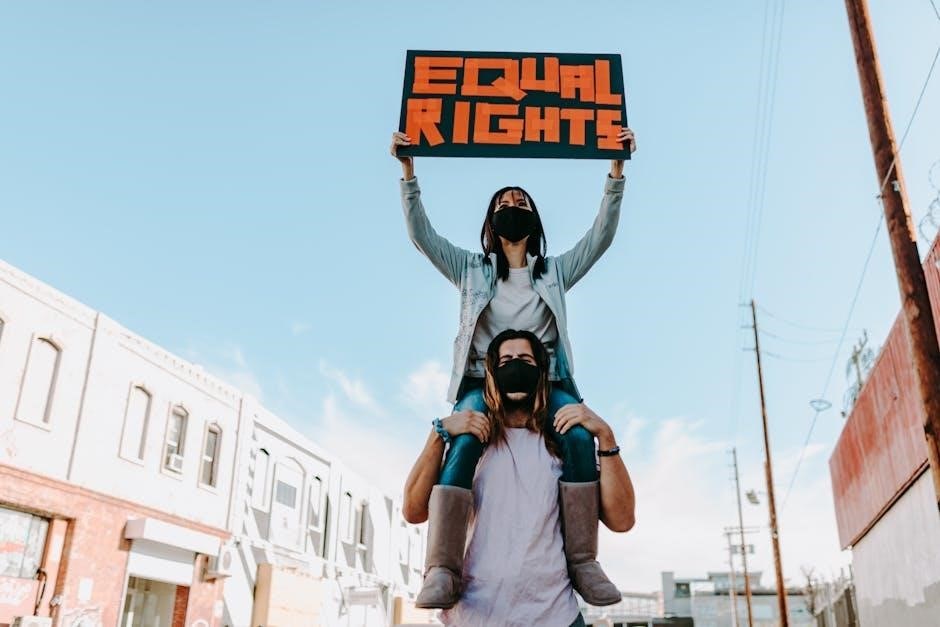
The Impact of World War I
The war led to massive economic losses‚ widespread societal changes‚ and the rise of new political ideologies. It also caused significant human suffering and reshaped global power structures.

The Treaty of Versailles and Its Consequences
The Treaty of Versailles‚ signed in 1919‚ officially ended World War I. It imposed harsh penalties on Germany‚ including significant territorial losses and heavy reparations. The War Guilt Clause placed full blame for the war on Germany‚ fueling widespread resentment. The treaty also led to the redrawing of national borders‚ creating unstable political conditions across Europe. While it aimed to establish a lasting peace‚ the treaty’s punitive measures contributed to economic hardship and political extremism in Germany. This environment ultimately facilitated the rise of Adolf Hitler and the Nazi Party‚ setting the stage for World War II. The treaty’s failure to address underlying issues left Europe vulnerable to future conflict‚ marking it as a critical turning point in modern history.
The Rise of Fascism and Nazism in Europe
The aftermath of World War I created fertile ground for the rise of fascism and Nazism in Europe. Economic instability‚ hyperinflation‚ and widespread unemployment fueled discontent; In Italy‚ Benito Mussolini exploited nationalist sentiments‚ promising to restore Italian greatness and order. Similarly‚ in Germany‚ Adolf Hitler capitalized on post-war grievances‚ blaming Jews‚ communists‚ and the Treaty of Versailles for the nation’s woes. Both leaders promoted authoritarian rule‚ suppressed opposition‚ and glorified militarism. Their aggressive expansionist policies‚ such as Italy’s invasion of Ethiopia and Germany’s remilitarization of the Rhineland‚ signaled a dangerous shift toward totalitarianism. These ideologies emphasized racial purity‚ national superiority‚ and the suppression of dissent‚ laying the groundwork for World War II and the devastation that followed.
The Economic and Social Changes Post-War
The aftermath of World War I brought significant economic and social changes across Europe. Many nations faced severe economic instability‚ with hyperinflation‚ unemployment‚ and war debts crippling their economies. Germany‚ in particular‚ suffered under the harsh reparations imposed by the Treaty of Versailles‚ leading to widespread poverty and resentment. Socially‚ the war disrupted traditional hierarchies‚ as women entered the workforce in greater numbers and soldiers returned home to face unemployment. The loss of empires and the redrawing of national borders created new nation-states‚ reshaping political and cultural identities. Labor movements and strikes became more common‚ reflecting growing dissatisfaction with economic conditions. These changes laid the groundwork for future political instability and the rise of extremist ideologies. The post-war era marked a turning point in European society‚ as old certainties crumbled and new challenges emerged.
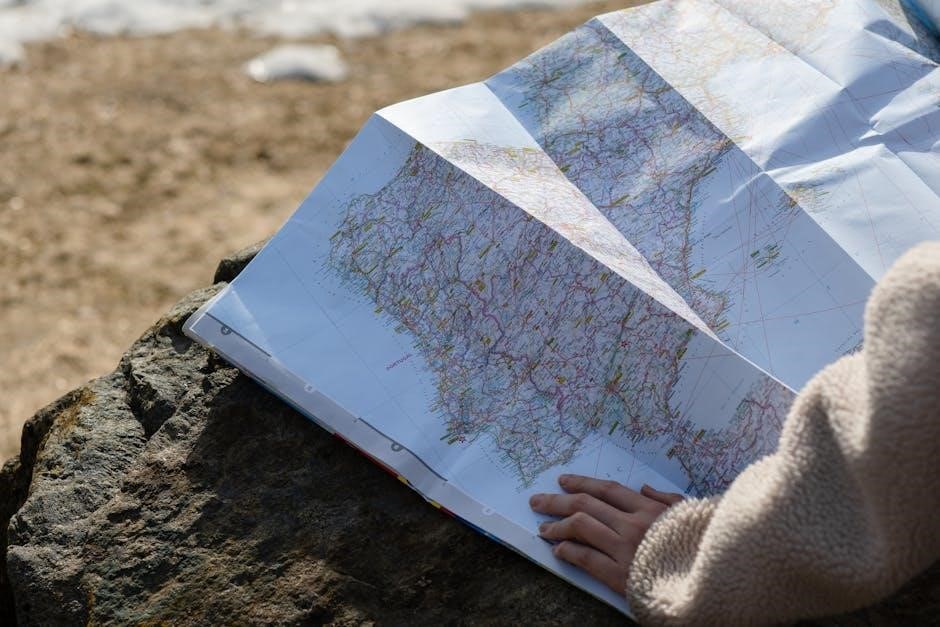
The Impact of the Russian Revolution
The Russian Revolution reshaped global politics‚ establishing the USSR and inspiring worldwide communist movements. Its aftermath led to a civil war and Stalin’s rise‚ profoundly influencing international relations.
The Russian Civil War and Its Aftermath
The Russian Civil War (1917–1922) erupted after the October Revolution‚ pitting the Bolshevik Red Army against the anti-Bolshevik White Army and other opposition groups. The conflict was fueled by political ideology‚ economic instability‚ and regional tensions. The Bolsheviks‚ led by Lenin‚ ultimately prevailed due to centralized organization‚ control of key cities‚ and strategic resources. The war’s aftermath saw widespread devastation‚ with millions dying from combat‚ famine‚ and disease. The Bolsheviks consolidated power‚ establishing the Cheka‚ a secret police force‚ to suppress dissent. This period also marked the rise of Joseph Stalin‚ who began to gain prominence within the party. The civil war’s legacy was a fractured society‚ a centrally controlled economy‚ and the foundation for the Soviet Union’s authoritarian regime. Its impact endured‚ shaping Russia’s political and social landscape for decades.
The Formation of the USSR and Its Global Influence
The formation of the Union of Soviet Socialist Republics (USSR) in 1922 marked a pivotal moment in world history. Following the Russian Civil War‚ the Bolsheviks‚ led by Lenin‚ consolidated power and united various Soviet republics under a single‚ centralized government. The USSR emerged as a global superpower‚ promoting Marxist-Leninist ideology worldwide. Its creation inspired socialist movements globally‚ while its authoritarian structure and economic model drew both admiration and criticism. The USSR’s influence extended through the Comintern‚ which aimed to spread communism internationally. The Five-Year Plans and collectivization policies transformed the USSR into an industrial powerhouse‚ though at great human cost. The USSR’s rise also set the stage for the Cold War‚ as its ideology and ambitions clashed with capitalist nations‚ particularly the United States. This period of global influence reshaped international relations and left a lasting legacy on modern geopolitics.
The Rise of Stalin and the Purges
Following Lenin’s death in 1924‚ Joseph Stalin emerged as the dominant leader of the Soviet Union‚ consolidating power through cunning and ruthlessness. By the late 1920s‚ Stalin had eliminated political rivals‚ including Leon Trotsky‚ and established a totalitarian regime. The Great Purge of 1936-1938 targeted perceived enemies of the state‚ leading to the executions of thousands of Communist Party members‚ military leaders‚ and ordinary citizens. Stalin’s regime was marked by forced collectivization‚ rapid industrialization‚ and brutal suppression of dissent. The purges created a climate of fear and loyalty‚ solidifying Stalin’s control. These actions transformed the USSR into a heavily centralized state‚ with Stalin’s personality cult dominating public life. The purges and repression had a profound impact on Soviet society‚ leaving deep scars that lasted for decades.

Comparing World War I and the Russian Revolution
Both events were pivotal in shaping the 20th century‚ yet distinct in nature. World War I was a global conflict driven by militarism and alliances‚ while the Russian Revolution was a domestic uprising fueled by political and economic unrest. Each reshaped global power dynamics‚ leading to lasting consequences.
Similarities and Differences in Their Causes
The causes of World War I and the Russian Revolution share some commonalities‚ such as political instability and social inequality. Both events were influenced by rising nationalism and economic strain. However‚ their triggers differed significantly. World War I was sparked by the assassination of Archduke Franz Ferdinand and the complex system of alliances‚ while the Russian Revolution was driven by widespread discontent with Czar Nicholas II’s rule and the devastating impact of the war on Russia. Unlike World War I‚ the Russian Revolution was deeply rooted in internal political and economic failures‚ including the country’s outdated autocratic system and severe social disparities. These differences highlight how distinct factors led to two of the most transformative events of the 20th century.
The Global and Regional Impacts Compared
World War I and the Russian Revolution had profound global and regional impacts‚ though their effects differed in scope and nature. World War I reshaped the global political landscape‚ leading to the collapse of empires like the Ottoman‚ Austro-Hungarian‚ and German empires‚ while the Russian Revolution established the Soviet Union‚ spreading communist ideology worldwide. Regionally‚ World War I devastated Europe‚ causing economic ruin and social unrest‚ whereas the Russian Revolution primarily transformed Russia and its neighboring regions into a socialist state. Both events influenced the rise of new political movements‚ with fascism emerging post-World War I and communism gaining momentum after the Russian Revolution. Globally‚ these events marked the end of old imperial orders and the birth of new ideologies that shaped the 20th century.
World War I and the Russian Revolution were pivotal events that reshaped global politics‚ societies‚ and ideologies. Their legacies continue to influence modern history and international relations significantly today.
The Lasting Legacy of Both Events
World War I and the Russian Revolution left enduring legacies that shaped the 20th century. The war’s aftermath‚ including the Treaty of Versailles‚ sowed seeds for World War II and the rise of fascism. The Russian Revolution established the Soviet Union‚ inspiring global socialist movements and fueling the Cold War. Economically‚ both events caused widespread devastation‚ leading to reforms and shifts in global power dynamics. Socially‚ they sparked changes in gender roles and labor rights. The rise of ideologies like Marxism-Leninism and nationalism reshaped political landscapes. These events underscored the fragility of empires and the power of revolutionary ideas‚ leaving a lasting impact on international relations‚ economic systems‚ and cultural identities. Their influence remains evident in modern geopolitical struggles and ideological conflicts.
